Which Dracula Movie Is Most Faithful to Bram Stoker?
There have been many adaptations of Bram Stoker’s novel Dracula, but finding the definitive one is harder than you think.

Dracula is one of the most recognizable figures in popular culture, having been a mainstay of literature, film, stage, comics, TV, and more for 125 years. And it all flows back to Bram Stoker’s original 1897 novel, Dracula, which not only stands as a milestone in both horror and English literature, but provided the template for the vampire that has influenced a vast swath of entertainment for more than a century.
The ancient Transylvanian Count has appeared in scores of films and TV shows over the years, but while there have been at least eight major, direct adaptations of Stoker’s novel, there has yet to be a version that can be said to be the definitive screen translation of the book. Part of the reason for that is its format: Dracula is an epistolary novel, told from the viewpoints of different characters largely through diary entries, journals, letters, and newspaper reports. While there has been at least one significant attempt to incorporate that into a movie, a straight page-to-screen transfer would never be possible.
In addition, the title character himself, after being very present in the opening chapters, is largely off the stage and manipulating events from behind the scenes for the rest of the story—a choice which works on the page to build up his frightening mystique and a sense of dread, but which is difficult for audiences to grasp when they’re paying good money to watch Dracula in action.
Nevertheless, all eight of the films we’ve pinpointed incorporate at least a few elements of the novel to some degree, whether it be the basic plot structure or a few of the main characters. Sadly, only one version to date features every member of the ad hoc vampire-hunting team that assembles to defeat Dracula. Quincey P. Morris, the Bowie knife-wielding Texan cowboy and suitor to Lucy Westenra, seems to get benched the most. And some versions combine characters or switch their narrative arcs for no good reason whatsoever (one director allegedly didn’t like the name of the book’s heroine, Mina).
So we’re listing the films below in order from least to most faithful to the text. Quality is a different thing entirely, which is why you’ll see a poorer film or two ranked higher than a couple of undisputed classics. But at the same time, even a film that deviates drastically from Stoker’s work in terms of story or characters might summon up the mood of the novel better than any other.
We’re not going to rehash the plot of Dracula here; we’ll assume that if you’re reading this, you’ve read or are familiar with the book. As for which screen version of the story is, in fact, the most faithful or even the best, you may be surprised by some of these. In the end, however, it’s whatever version of Dracula works best for you.

8. Nosferatu (1922)
The story of Nosferatu, one of the acknowledged masterpieces of horror cinema, is that Bram Stoker’s widow, Florence Stoker, did not authorize this German adaptation of her late husband’s novel (she didn’t even know it was being made). The producers and director F.W. Murnau simply changed the title and all of the names: Count Dracula, famously portrayed by enigmatic German actor Max Schreck, became Count Orlok, Jonathan Harker was now Thomas Hutter, and so on. They still had the audacity, however, to credit their work as “freely adapted” from Dracula. Chaos ensued as Florence attempted to have the blatant case of copyright theft eradicated.
A century later, this silent, Expressionist classic still retains an eerie power though, chiefly due to Murnau’s highly atmospheric direction and mise-en-scène, along with Schreck’s spidery performance and thoroughly creepy make-up. As far as faithfulness goes, aside from the changing of the names and Schreck’s more inhuman portrayal, the film slims down the plot quite a bit, focusing largely on Thomas Hutter’s journey to visit Orlok, and Hutter’s psychic link with his wife Ellen (Mina) back home.
Key characters such as Lucy Westenra and the team of vampire hunters led by Van Helsing are nowhere in sight, with Ellen herself providing the means by which Dracula—sorry, Orlok—is dispatched. Faithful in narrative, plot points and characters? Not so much. In mood and imagery? Stoker might have been proud.
As for Werner Herzog’s 1979 remake, starring Klaus Kinski as Count Dracula, Isabelle Adjani as Lucy, and Bruno Ganz as Jonathan Harker (yes, some of the names have been restored), it’s a creepy mood piece as well, but even less faithful to the novel.
Much of the movie focuses on Harker’s journey to the castle and Dracula’s voyage aboard the ship, with the domestic action moved from England to Germany, and almost none of the novel’s plot is utilized (Van Helsing is a doddering local doctor and the rest of the characters are absent). Kinski is a sad, groaning Dracula who wants to die, and Adjani becomes the hero in the end. An interesting, visually inspired take, but a radically different one.

7. Dracula (1979)
Based, like the 1931 Bela Lugosi film, on the Broadway stage play (itself adapted from Stoker’s novel in 1924 by Hamilton Deane and revised in 1927 by John L. Balderston), this version of the tale, directed by John Badham (Saturday Night Fever), takes some extensive liberties with the original text.
The entire first portion of the book—Jonathan Harker’s journey to Dracula’s castle in Transylvania—is omitted, with the story starting as the Demeter ghost ship carrying the Count arrives on the shores of Whitby, England. The characters of Lucy and Mina are inexplicably switched, with Mina now the daughter of Abraham Van Helsing (Laurence Olivier) and Dracula’s first victim. Meanwhile Lucy, who is the daughter Dr. Jack Seward (Donald Pleasence), is his next target after her. Other details are changed as well, including the manner of Dracula’s demise (he is hoisted to the top of a boat’s mast where the sun fries him… which brings us to the fact that Stoker’s Dracula could actually walk in the sun, unlike Langella or Schreck in Nosferatu).
The biggest change, however, is that Dracula (Frank Langella, direct from the 1977 Broadway revival) is dashing, handsome, powerfully attractive, and undeniably romantic. The underlying notion of him as a sexual predator—something touched on in the book—is undercut by Lucy’s (Kate Nelligan) willing desire to be with him. While his vampiric nature certainly comes out, this Dracula arguably paved the way for the hordes of romantic vampires to come, distancing him from Stoker’s original, more feral creation.
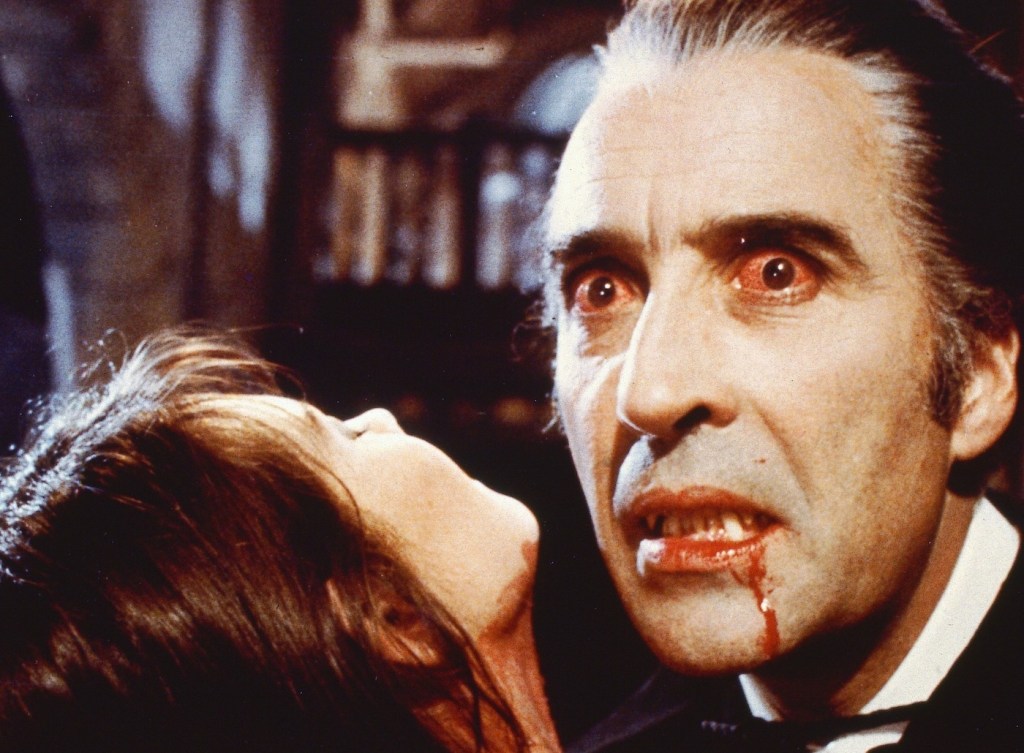
6. Horror of Dracula (1958)
One of the very best Dracula movies of all time is one of the least adherent to the text. Christopher Lee delivered perhaps the definitive Dracula (miles better than Lugosi) while Peter Cushing set the standard for all Van Helsings to come (even if he didn’t play him as an elderly Dutch scientist) in this Terence Fisher-directed Hammer Films gem, the first Dracula movie shot in color.
Most of the characters and plot are changed though: Jonathan Harker does not visit Castle Dracula to complete the Count’s purchase of London properties but to destroy him, posing as a librarian hired to catalog the castle’s books but secretly there on the orders of Van Helsing.
Renfield, Dr. Seward, and Quincey Morris are all gone; Harker is turned into a vampire, after which Dracula pursues his fiancée, Lucy. The latter is now the sister of Arthur Holmwood, whom is married to Mina (in the book Lucy intended to marry Arthur). Dracula does target Mina in the third act, so at least that is somewhat faithful, but as you can see, many elements of the book are jettisoned or altered. Even the long journeys between England and Transylvania are reduced to quick carriage rides between anonymous Central European villages whose names end in “burg” or “stadt.”
All this is done to make a 90-minute movie for a price, but it doesn’t hurt the overall power of the film that much. Then, of course, there is Lee: a towering presence who combines nobility, sexuality, savagery, and an otherworldly aura into a magnificent, game-changing performance. Add the generous blood flow, heaving bosoms, and sumptuous colors that Hammer Films became known for, and Horror of Dracula (just Dracula in the UK) leaves us satisfied, even as it leaves most of Stoker in the dust.
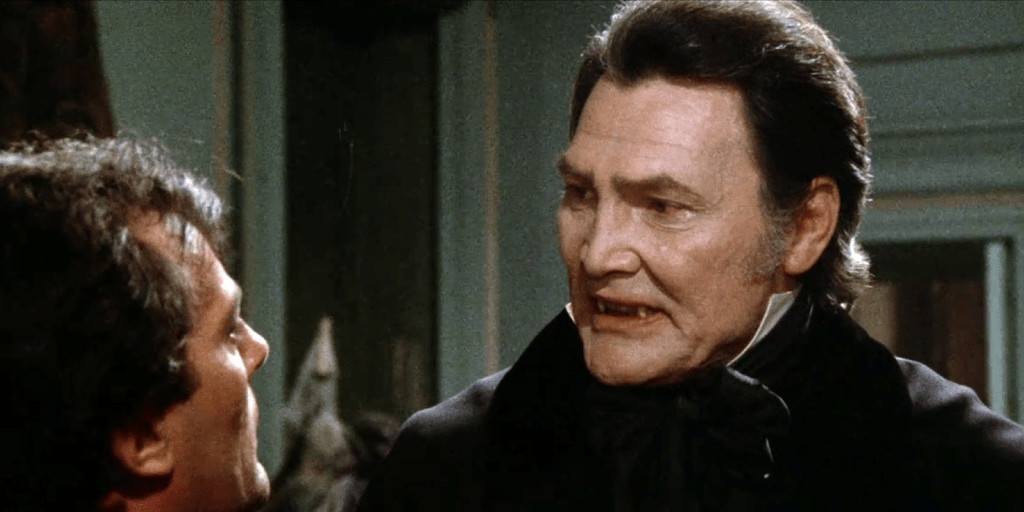
5. Dan Curtis’ Dracula (1974)
At least director Dan Curtis, creator of Dark Shadows, director and producer of shocking TV movies like Trilogy of Terror, and epic miniseries such as The Winds of War, stopped calling it “Bram Stoker’s” Dracula after a time. That’s a good thing, because Curtis’ TV movie, with Jack Palance as the Count, is the first to heavily imply that Dracula is actually the real-life Vlad the Impaler, a connection that Stoker only made through research after already creating a vampire character. At best, the novel might vaguely hint at this being the same person. Curtis’ film also makes Lucy the spitting image of Dracula’s long-dead wife, another aspect not taken from Stoker at all but nevertheless utilized in many versions to come.
In addition to that, we’ve got a slimmed-down vampire hunting squad (only Van Helsing and Holmwood make the cut), while Jonathan Harker is turned into a vampire yet again. The movie does incorporate a number of key scenes from the book (even if it lifts the mode of Dracula’s death from Horror of Dracula), but on the other hand, Renfield and the asylum run by Dr. Seward are absent entirely. Despite its TV budget, the movie does benefit from being shot on real locations in Yugoslavia and England.
So it’s not particularly faithful, which is okay, but the film is hurt by the egregious miscasting of Palance in the title role. He is perhaps the worst Dracula of all these direct adaptations, a grizzled old Western star haplessly trying to play an immortal, ancient nobleman from eastern Europe. It’s a fail that Dan Curtis’ Dracula cannot recover from, even if it filmed every page in Stoker’s book.
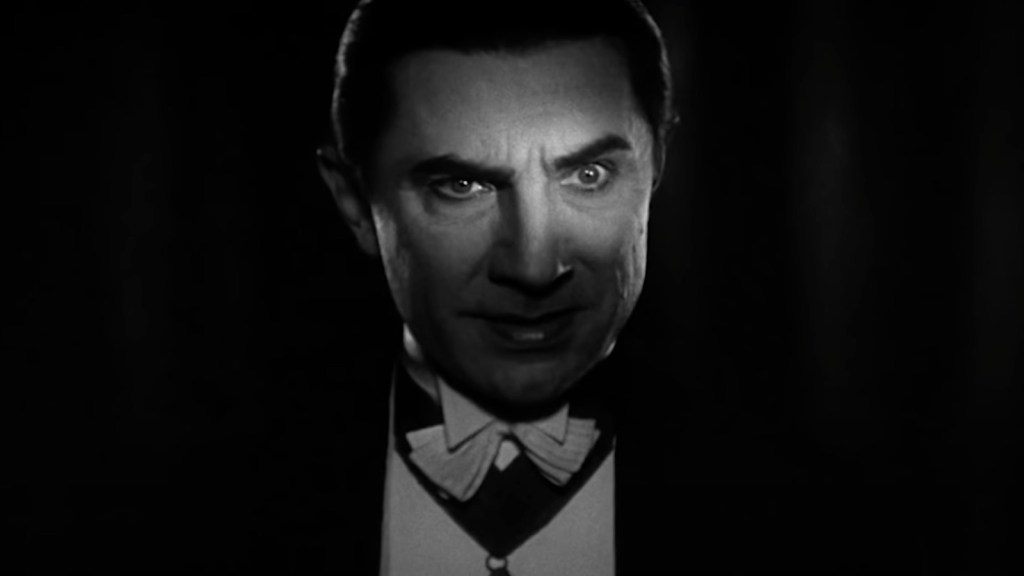
4. Dracula (1931)
Perhaps more than anything else, even later film versions, this is the motion picture that firmly established the popular iconography of Dracula in the cultural zeitgeist. Hungarian actor Bela Lugosi’s elegant-looking if hammy nobleman, in tails and cape, was a far cry from Max Schreck’s rodent-like Orlok and even Stoker’s aged, decrepit-looking Count, marking perhaps the biggest stylistic difference from the original text and one which later versions countered with varying degrees of success.
This Dracula, the first sound version of the screen, was also based on the Deane/Balderston stage version of the book. As a result, director Tod Browning’s film plays and moves very much like a drawing-room drama after the initial opening scenes on the magnificent Castle Dracula set. The basic plot remains the same, with the major change being that it’s Renfield (Dwight Frye) who first visits Castle Dracula, not Jonathan Harker, with Renfield going insane as he comes under Dracula’s will.
Otherwise, the main beats remain more or less faithful to the book: Dracula journeys to Whitby by boat, purchases Carfax Abbey, and begins to prey first on Lucy, then Mina (who has been made Dr. Seward’s daughter in this version). Van Helsing, Harker, and Seward are all present, but largely stand around. Most of the action, even the climactic staking of the Count, happens offscreen. Seen today, 1931’s Dracula is slow-moving, sexless, and staid, lacking the melodrama and often chilling atmosphere of the book, but its imagery and influence on pop culture is unquestionable.
A Spanish-language version of the film, shot at night on the same sets with the same script but a different cast and director, has divided critics over which version is better. While following the same plot and paced even slower, some have suggested that director George Melford made better use of the camera and sets, although actor Carlos Villarias’ portrayal of the Count pales next to Lugosi’s.
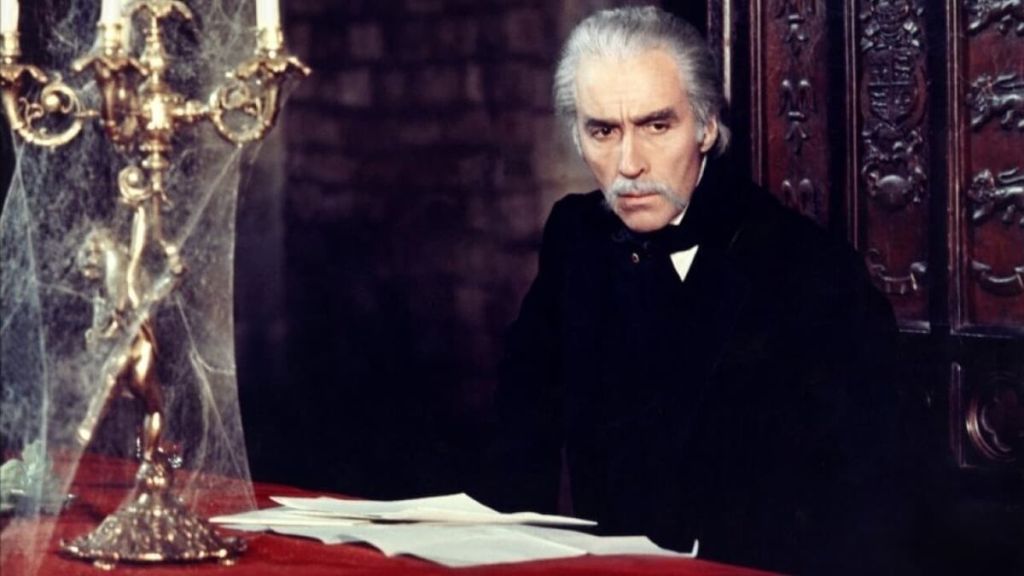
3. Count Dracula (1970)
In Jesús Franco’s nearly 60-year career, the Spanish filmmaker wrote, produced, and directed hundreds of films, although how many of them were actually good remains a question to this day. Franco worked mostly in low-budget exploitation, horror, and adult films (both softcore and hardcore), and his talents behind the camera rarely rose above the level of the material and resources he was working with. One semi-exception was this Spanish-based production, which was advertised as the most faithful version of the book up to that time.
That must have been what Franco used to lure Christopher Lee into the project, who by that time had publicly declared that he was exhausted with playing the part after five Hammer entries. Indeed, Count Dracula is fairly faithful to the book, and is notable for being the first version of the story to show Dracula getting younger as the story goes on. When we first meet him, he has white hair and a mustache (just like in the novel), a detail not deployed again until Coppola’s version in 1992.
Van Helsing (the great Herbert Lom), Harker, Dr. Seward, Lucy (played by Spanish cult actress Soledad Miranda), Mina, and even Quincey Morris are all here (Arthur Holmwood is not), with the movie following Stoker’s narrative fairly closely until the end. The problem is that Franco’s direction is as lackadaisical as ever, and the cast beyond Lom and Lee (who’s not in much of the picture) is not very good at all. It’s just dull and visually uninteresting, even with some striking Spanish locales, making it a curio for completists but not worth the time for the casual viewer.
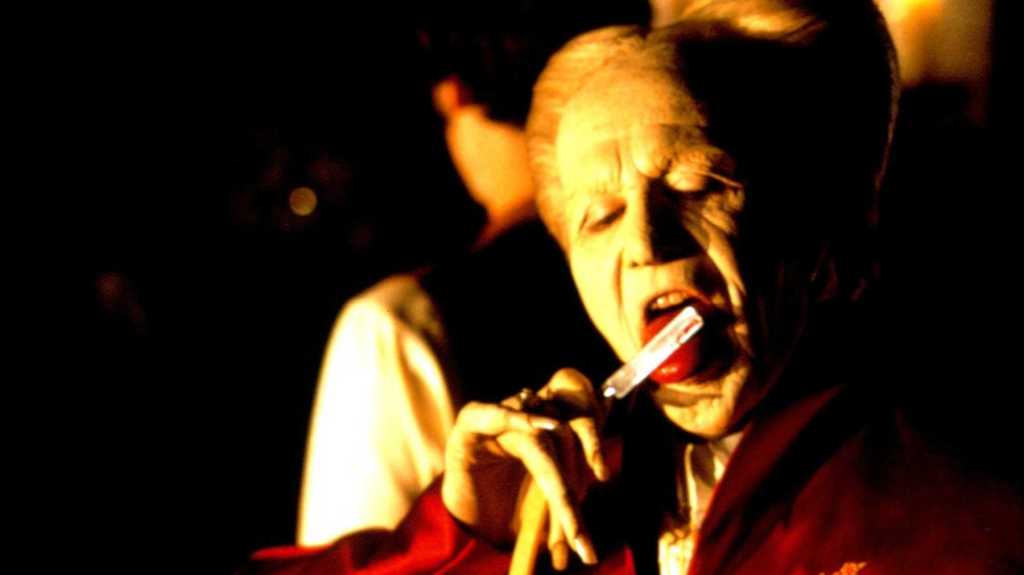
2. Bram Stoker’s Dracula (1992)
It’s called Bram Stoker’s Dracula, but it’s really not. It’s more, as our own David Crow explains, Francis Ford Coppola’s interpretation of Bram Stoker’s novel. It’s still a remarkable and, in many ways, faithful film overall. It’s arguably Coppola’s last great work to date; it’s got a mostly fantastic cast (with one exception); the costumes, sets, production design, and score are all outstanding; and Coppola (with the help of his son Roman) doing as many of the visual effects in-camera as possible, which gives it a surreal, timeless quality matching the atmosphere that the director creates.
Yes, Coppola and screenwriter James Hart introduce the “love across time” theme, with Winona Ryder’s Mina explicitly written as the reincarnation of Dracula’s lost bride, that is absolutely nowhere to be found in Stoker’s novel. They also directly bake Dracula’s secret identity as Vlad Tepes into his origin story, complete with a rejection of God and a pseudo-redemption at the end The closing scene almost makes Dracula the hero, a silly notion given just enough gravitas by the performances of Ryder and Gary Oldman as the Count.
Oldman is superb, channeling Lugosi, Lee, and his own unique take, while Anthony Hopkins is also excellent as a truly eccentric Van Helsing. The whole gang is here, even Quincey Morris (who finally gets his heroic death scene from the novel), and all are perhaps given their best rendering to date—with the exception of Jonathan Harker who cannot escape the fact that he is played by an out-of-his-depth, wildly miscast Keanu Reeves. Kudos also to Sadie Frost’s carnal, alluring Lucy, who, along with the Monica Bellucci-led vampire brides, and Ryder’s repressed yet horny Mina, makes this the most erotic Dracula yet.
In the end, Bram Stoker’s Dracula may be a wash in terms of faithfulness, but a magnificent one nonetheless. All the major plot beats are here in order, many of Dracula’s powers (such as turning into rats or mist) are staged at last, and it’s the only adaptation of them all to actually include a number of voiceover journal entries as homage to the novel’s epistolary structure. Yet it turns Stoker’s monster into a tragic figure, something that Stoker never would likely abhor.
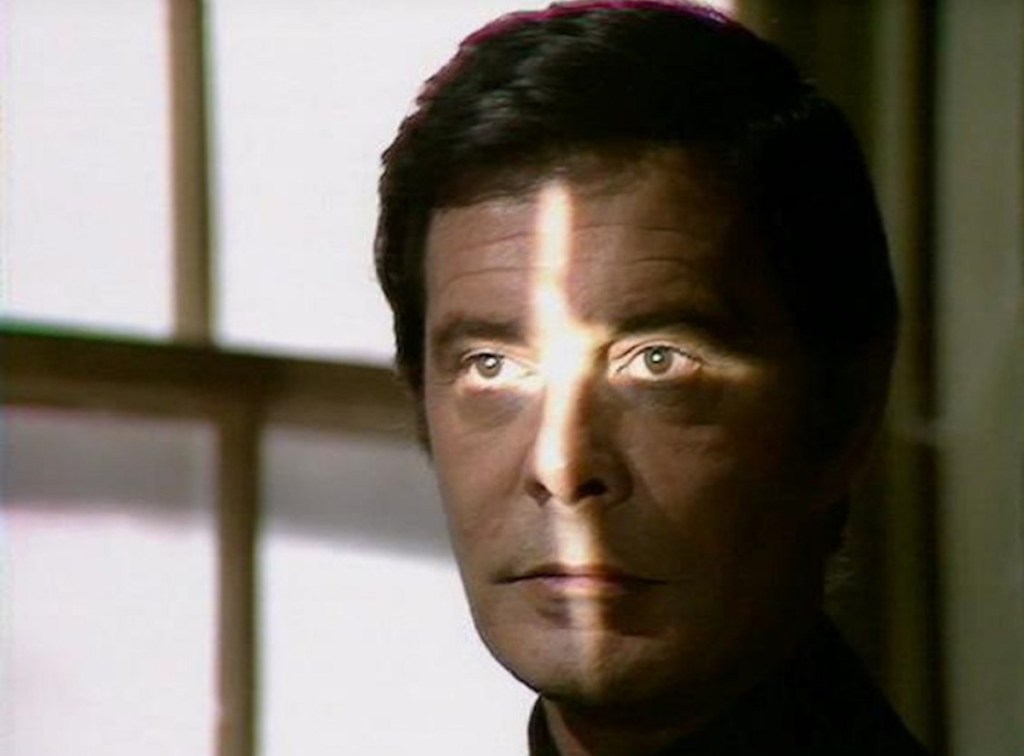
1. Count Dracula (1977)
Surprisingly, the version of Dracula most faithful in plot detail to the novel may be the hardest to see of all. Regrettably, we only found a visually poor, if complete, copy of it on YouTube. If the original materials are intact, it would be terrific to see a remastered, upgraded version of this film.
This 1977 two-and-a-half-hour TV movie was commissioned by the BBC and stars French actor Louis Jourdan (Bond baddie Kamal Khan in Octopussy) as the Count and British actor Frank Finlay as Van Helsing. It makes two major changes to the book: Mina and Lucy are sisters here while Quincey Morris and Arthur Holmwood are combined into one character, Quincey Holmwood. But otherwise it follows the story from the novel with remarkable fidelity.
Jourdan gives us a take on the Count that’s uniquely his own: rigid, precise, almost military in his stature, yet also quite cold and distant. He’s more Lee than Lugosi or Oldman, but he also never gets quite as feral as Lee either. As handsome as he is, there’s almost no romanticism in his portrayal, but still plenty of danger. The eroticism comes from the women. Susan Penhaligon as Lucy and Judi Bowker as Mina effectively convey their transformation from prim Victorian women to wanton vampire lovers in an understated way that feels more like Stoker to us.
One thing that works both for and against Count Dracula is the way it was filmed. Like many British TV productions, Count Dracula’s interiors are shot on video and its exteriors on celluloid – giving it a dated feel that’s not helped by a number of lackluster visual effects. However, the nature of the production forces it to scale back, making it a “grittier” adaptation, if you will, that is still atmospheric and probably tacks closer to Stoker than the more sumptuous vision of directors like Coppola. This is, oddly, a more “realistic” version of Dracula – and it works.
